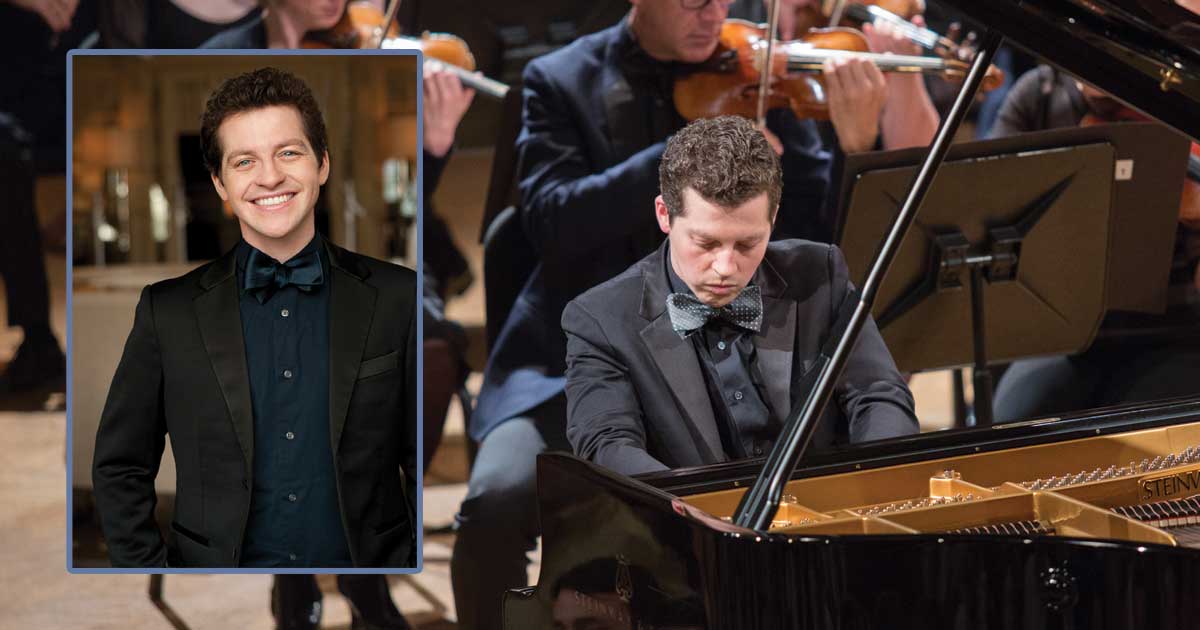
About
“An exciting talent on the world stage.” Laureate of the 2017 American Pianists Association Awards and lauded as “triumphant” and “thrilling” by The New York Times. Henry Kramer is well-known in the Bay Area through his participation as an artist with Music@Menlo’s International Program (2016).
Kramer is rapidly establishing himself as one of the most exciting young pianists on the concert stage. He is winner of the 2015 William Petschek Recital Debut Award from the Juilliard School. A native of Maine, he earned top prizes in the 2016 Queen Elisabeth Competition in Belgium, 2015 Honens International Piano Competition, the 2011 Montreal International Music Competition, and the Sixth China Shanghai International Piano Competition.
Henry Kramer holds both a bachelor’s and a master’s degree from the Juilliard School and an Artist Diploma from the Yale School of Music, where he received the Charles S. Miller Prize for the most outstanding first-year pianist. He currently is pursuing doctoral studies at the Yale School of Music and was recently appointed the L. Rex Whiddon Distinguished Chair in Piano at the Schwob School of Music in Columbus, GA.
Henry Kramer will also be at an in-home salon fundraiser on Saturday, November 10. Reserve your spot now.
Program
- Hirtengesang an der Krippe (“Song of the Shepherds at the Manger”) (Pastorale), S. 498b, No. 4
- Die heiligen drei Könige (“The Three Holy Kings”) (March), S. 498b, No. 5
- Prélude (Moderato)
- Menuet (Andantino)
- Clair de lune (Andante très expressif)
- Passepied (Allegretto ma non troppo)
Program Notes
In 1865, Franz Liszt received the tonsure and thereafter became known as Abbé Liszt. Residing in Rome, he began focusing on writing religious music, including most notably his nearly three-hour oratorio, Christus. Completed in 1866, Christus charts the traditional narrative of Jesus’s life in three parts: Christmas Oratorio, After Epiphany, and Passion and Resurrection. In 1873, Liszt adapted two orchestral movements from the Nativity Scene for solo piano: the first is a lush evocation of voices and shepherds’ pipes celebrating the newborn Jesus, while the second is a monumental march depicting the arrival of the Three Kings of the Orient.
In 1822, soon after leaving his Unfinished Symphony … well, unfinished, Schubert channeled his energy into a remarkably innovative work for piano, the Wanderer Fantasy. Cast in four movements that transition seamlessly into each another, the Fantasy is a quasi-symphonic exploration of the range of expression that a single musical motif can convey.
This motif originates from Schubert’s 1816 song Der Wanderer, in which the Wanderer laments that he is a stranger wherever he goes. In the course of the Wanderer Fantasy, Schubert transforms the Wanderer theme through an astonishing range of emotions. In the opening Allegro, he begins with a dazzling march, followed by a somber Adagio. He does an about-face in the Scherzo, transforming the theme into a rollicking dance. A thundering fugato on the theme opens the Finale, returning to the opening movement’s radiant mood.
Schubert regarded the Wanderer Fantasy as his most technically difficult work for piano. The score is littered with punishingly strenuous octaves, arpeggios, and tremolos, such that Schubert himself had trouble doing the piece justice, and quipped that “the devil may play it!”
The Sonata-Fantasy is in two movements, with a style that combines Chopin-like Romanticism with an impressionistic touch. It is one of Scriabin’s most popular pieces. Following the example of Beethoven’s Moonlight Sonata of nearly a hundred years before, the opening movement is slow. Scriabin’s program note for the piece reads: “The first section represents the quiet of a southern night on the seashore; the development is the dark agitation of the deep, deep sea. The E-major middle section shows caressing moonlight coming up after the first darkness of night. The second movement represents the vast expanse of ocean in stormy agitation.” The work was published in 1898 after Scriabin had worked on it for five years.
Prior to penning his groundbreaking symphonic poem Prélude à l’après-midi d’un faune (1894), Debussy wrote in a harmonically conservative style influenced by his elders, Massenet and Fauré. As his reputation as a revolutionary composer blossomed, Debussy grew more reluctant to see his earlier compositions published, feeling they were not representative of his mature style. Thus, he did not agree to publication of his 1890 Suite bergamasque until after extensively revising it in 1905.
The work’s title is derived from Paul Verlaine’s 1869 poem “Clair de lune,” which references the “floating world” of artificial aristocratic pastoralism as painted by Antoine Watteau in the early 18th century. The opening Prélude is imbued with baroque poise and a whiff of wistfulness, while the assertive Menuet features a tinge of Spanish flair. Clair de lune is rightfully famous for its masterful juxtaposition of the moon’s luminous stasis with its observer’s passionate meditations. Rounding out the suite is the Passepied, a sprightly dance with origins in the maritime region of Brittany.
Possibly inspired by the 1719 Watteau painting The Embarkation for Cythera, L’isle joyeuse (1904) is as much a programmatic evocation of Arcadia as it is a study in the interactions between the major scale, the Lydian mode (a major scale with the 4th degree raised a half step), and the whole-tone scale. An extemporaneous introduction in whole tones gives way to a main theme featuring characteristically Lydian raised fourths. The expansive second theme is cast in the traditional major key. The development section becomes an exploration and recombination of these three harmonic syntaxes along with their respective themes, leading to a climax that integrates all the melodic ideas.